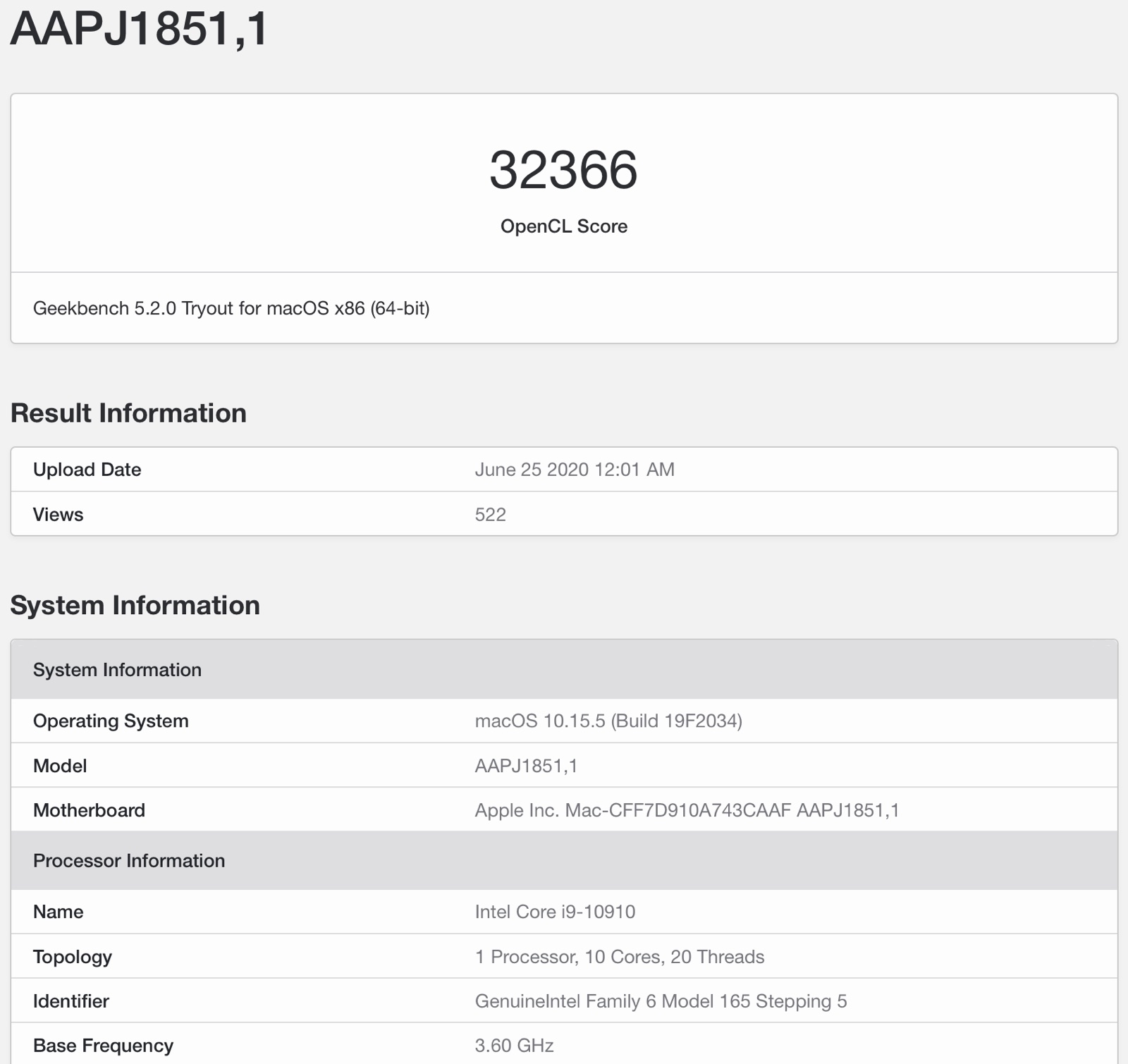![]()
Benchmarks for an unreleased iMac equipped with a 10th-generation Core i9 Intel Comet Lake-S chip and an AMD Radeon Pro 5300 graphics card have surfaced, giving us an idea of what we can expect from a refreshed 2020 iMac.
The
Geekbench benchmarks, which appear to be legit, were found on
Twitter and shared this morning by
Tom's Hardware. The iMac in the benchmarks would be a successor to the 27-inch iMac.
The machine features Intel's 3.6GHz Core i9-10910 chip with 10 CPU cores, 20 threads, a 20MB L3 cache, and 4.7GHz Turbo Boost, a successor to the Core i9 chip found in the current high-end 27-inch iMac Pro. As
Tom's Hardware points out, the chip appears to be a higher clocked 95W Core i9-10900 that's unique to the iMac.
The unreleased iMac is also equipped with an as of yet unannounced AMD Radeon Pro 5300 graphics card, which seems to be a desktop version of the Radeon Pro 5300M released last year with Navi 14 silicon.
There's no word on when Apple might release an updated iMac, but there were rumors suggesting a new machine
could come at WWDC. Rumors have suggested an updated 2020 iMac might feature the first redesign we've seen in years with "iPad Pro design language" and thin bezels similar to the bezels on the Pro Display XDR.
The updated machine is expected to feature a T2 chip for security and controller functions along with an AMD Navi GPU and an all-flash storage setup. It's not clear what size it will be, but there have been multiple rumors suggesting Apple is working on a 23 or 24-inch iMac with an all new form factor.
Apple analyst Ming-Chi Kuo
recently said the 24-inch iMac would be one of the first Macs to get an Apple Silicon chip in late 2020 or 2021, but said that Apple plans to refresh the existing Intel iMac in the third quarter of 2020, which appears to be the machine we're seeing in the benchmarks.
Whether the new machine features a new look remains to be seen, as the redesign could be something Apple is holding back for when the company is ready to debut its Apple Silicon chips. Apple said the first Mac with an Apple-designed chip would come in late 2020, but did not provide details on which Mac that would be.
It's possible that this Intel refresh will see Apple reusing the same 27-inch iMac design that hasn't been updated since 2012.
Article Link:
Unreleased iMac With 10-Core Comet Lake-S Chip and Radeon Pro 5300 GPU Shows Up in Geekbench



